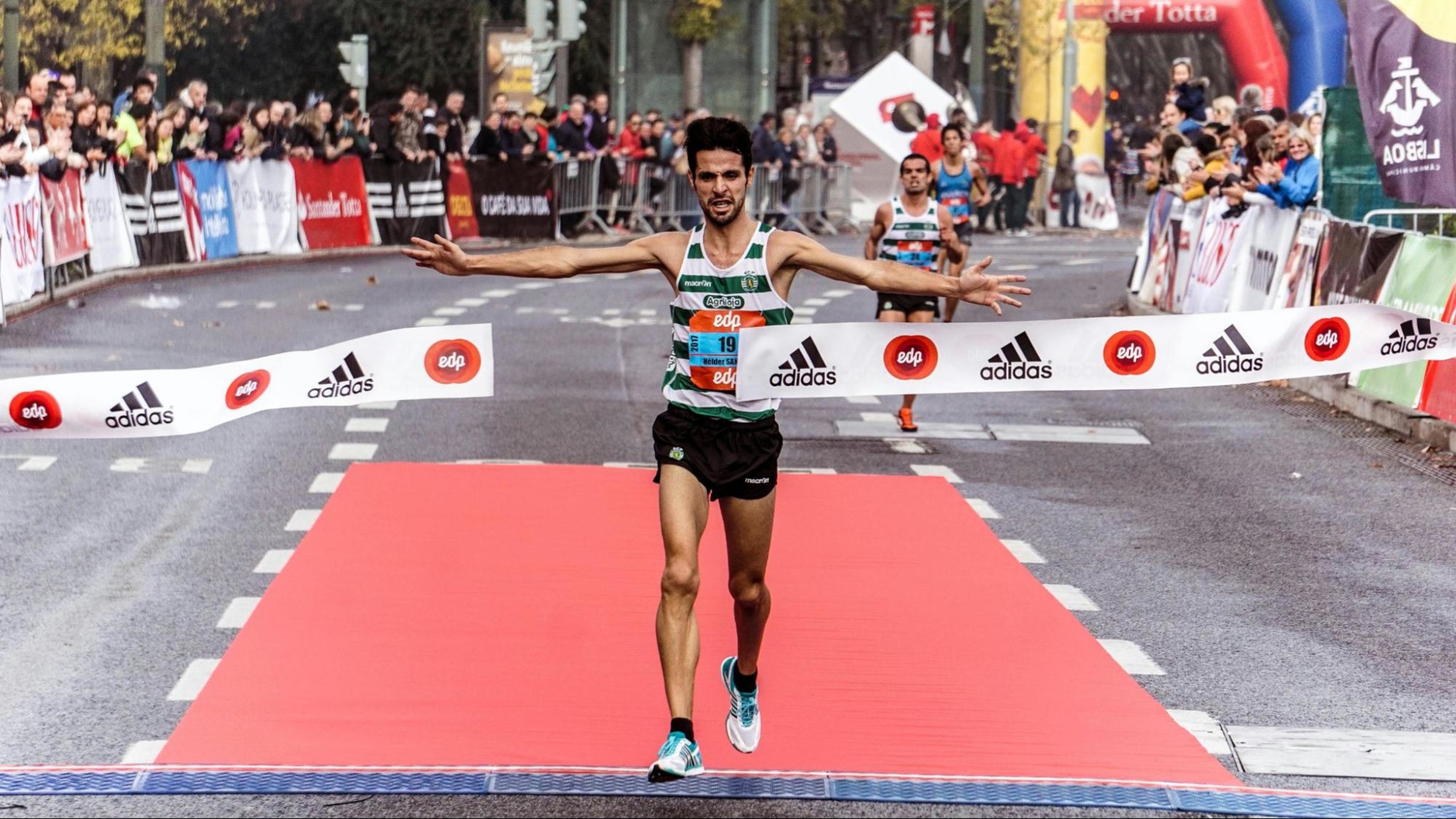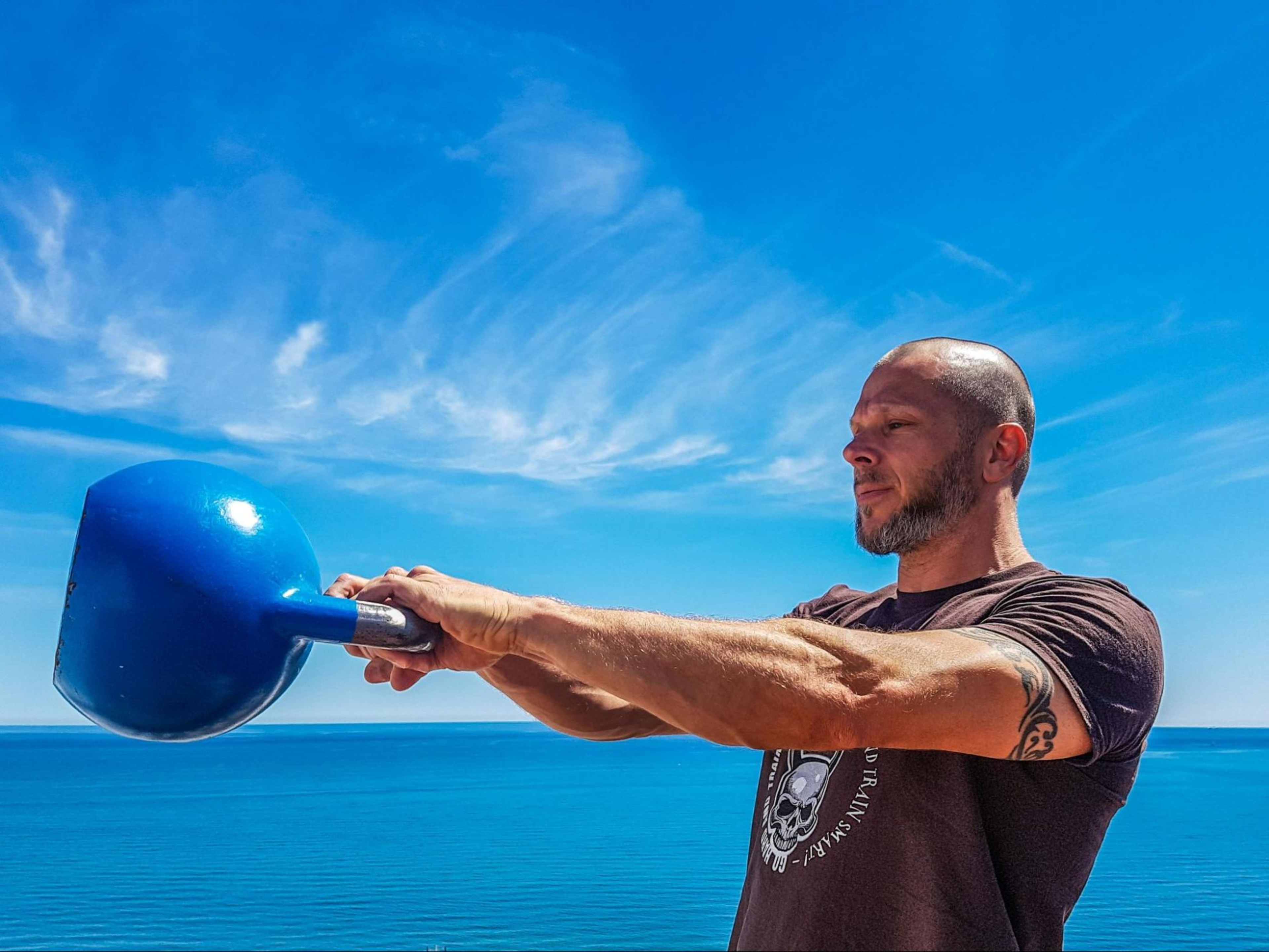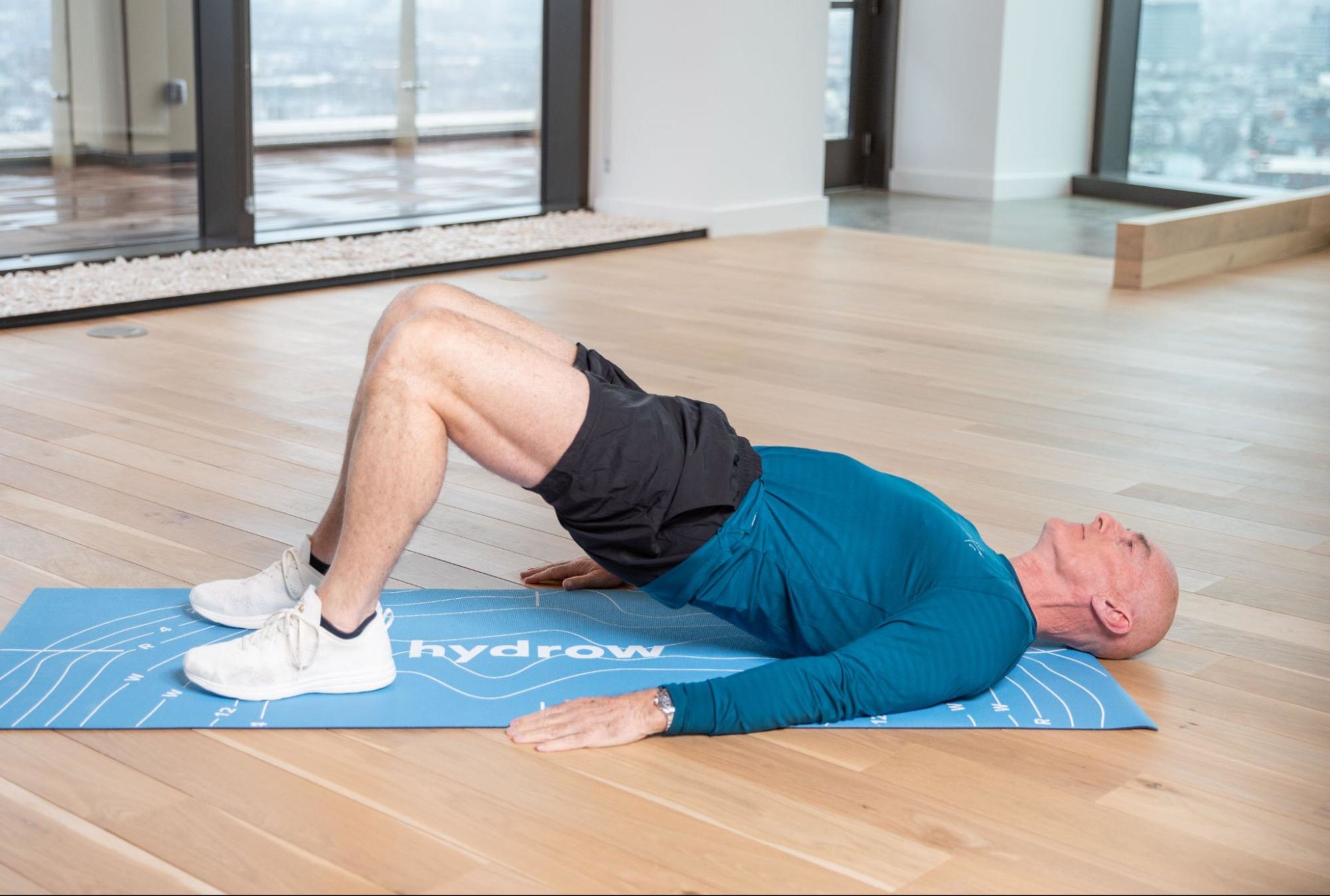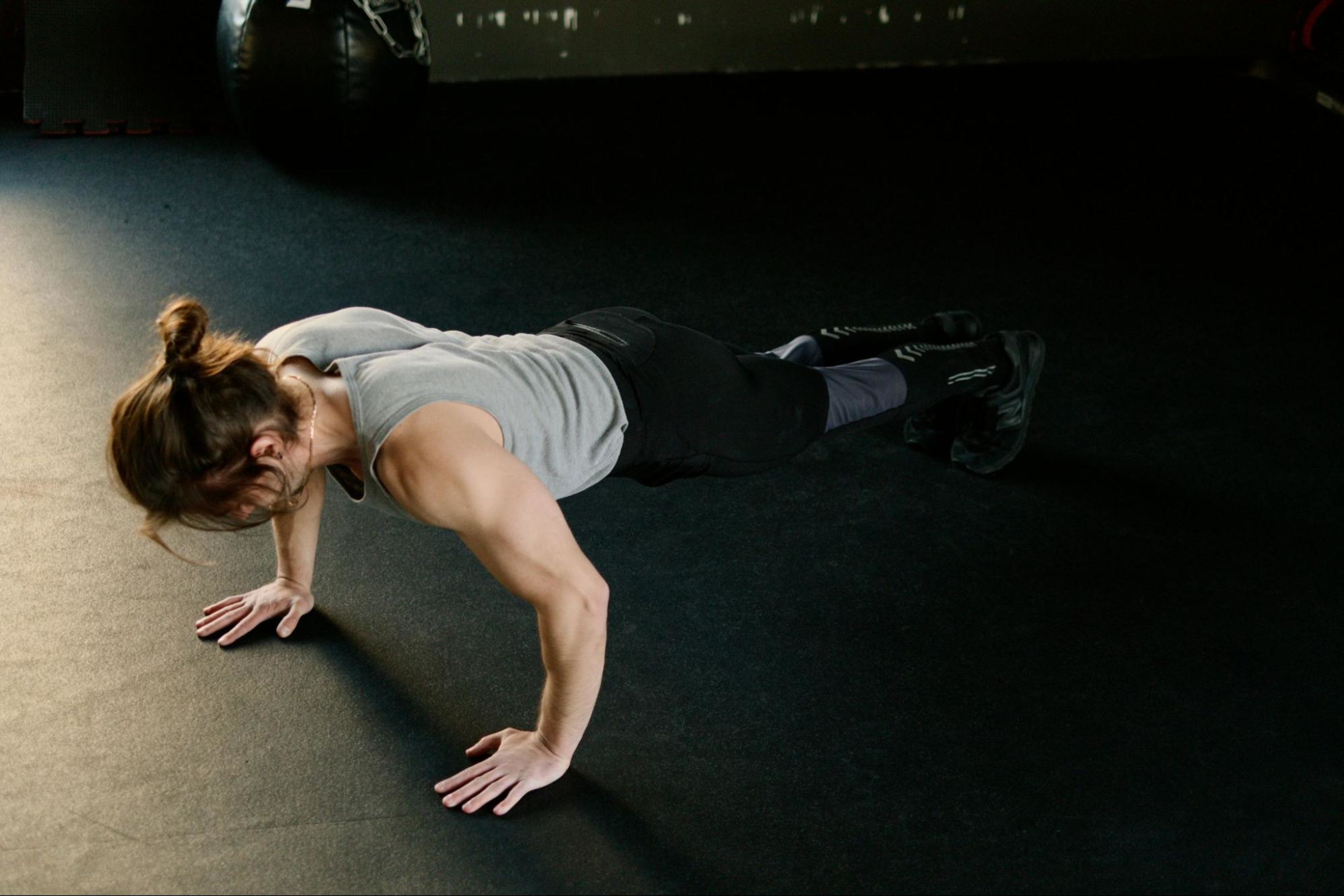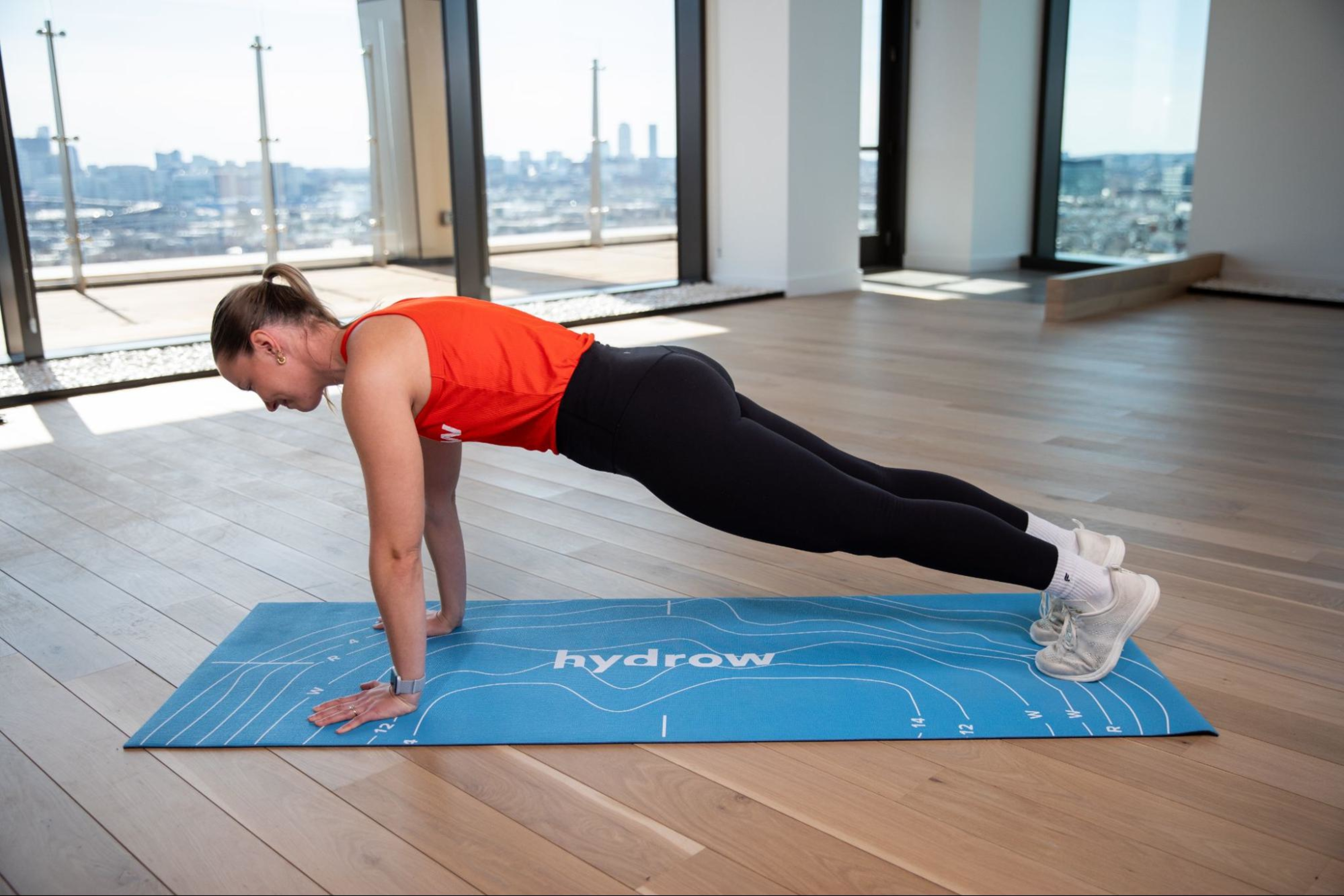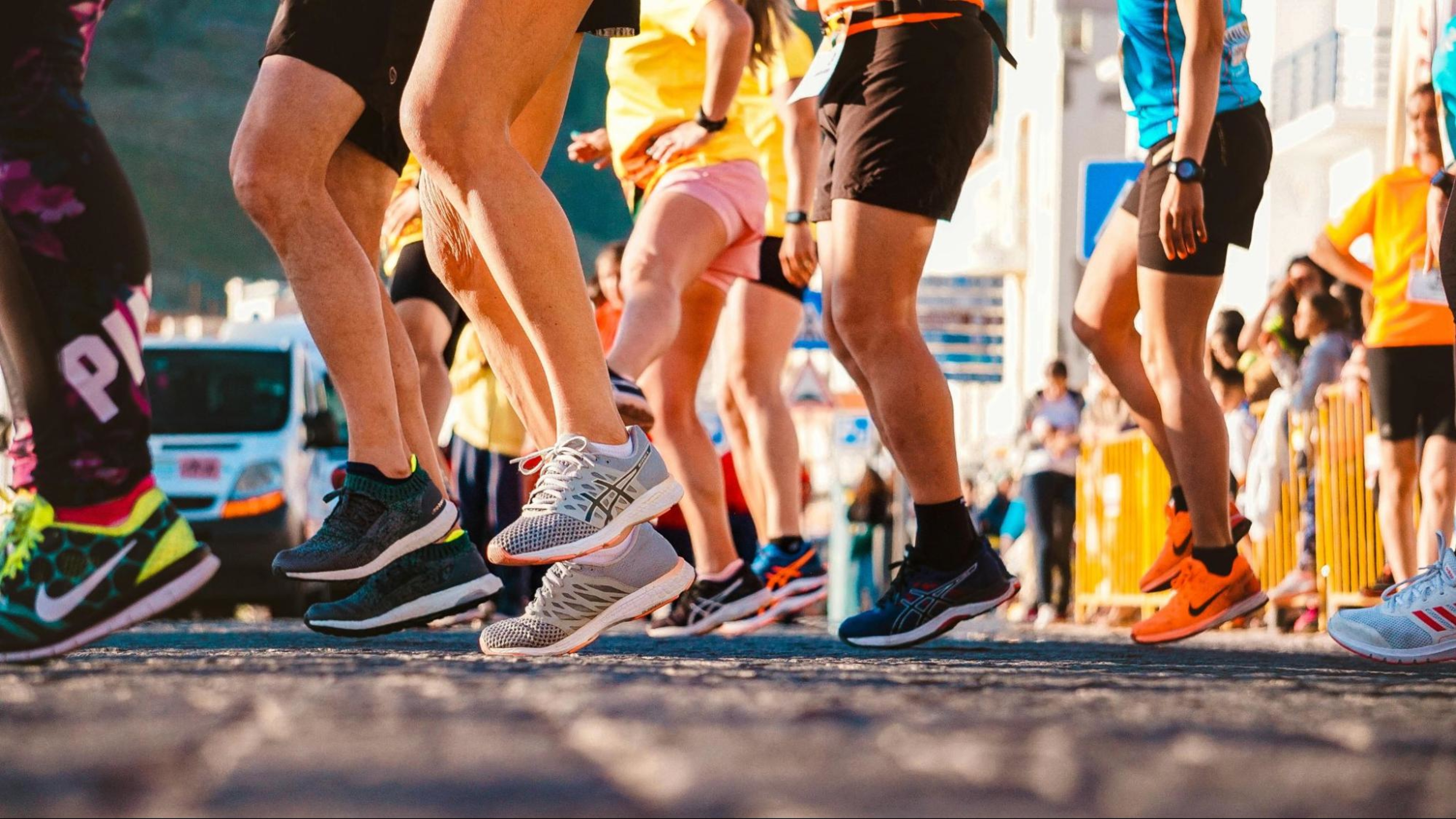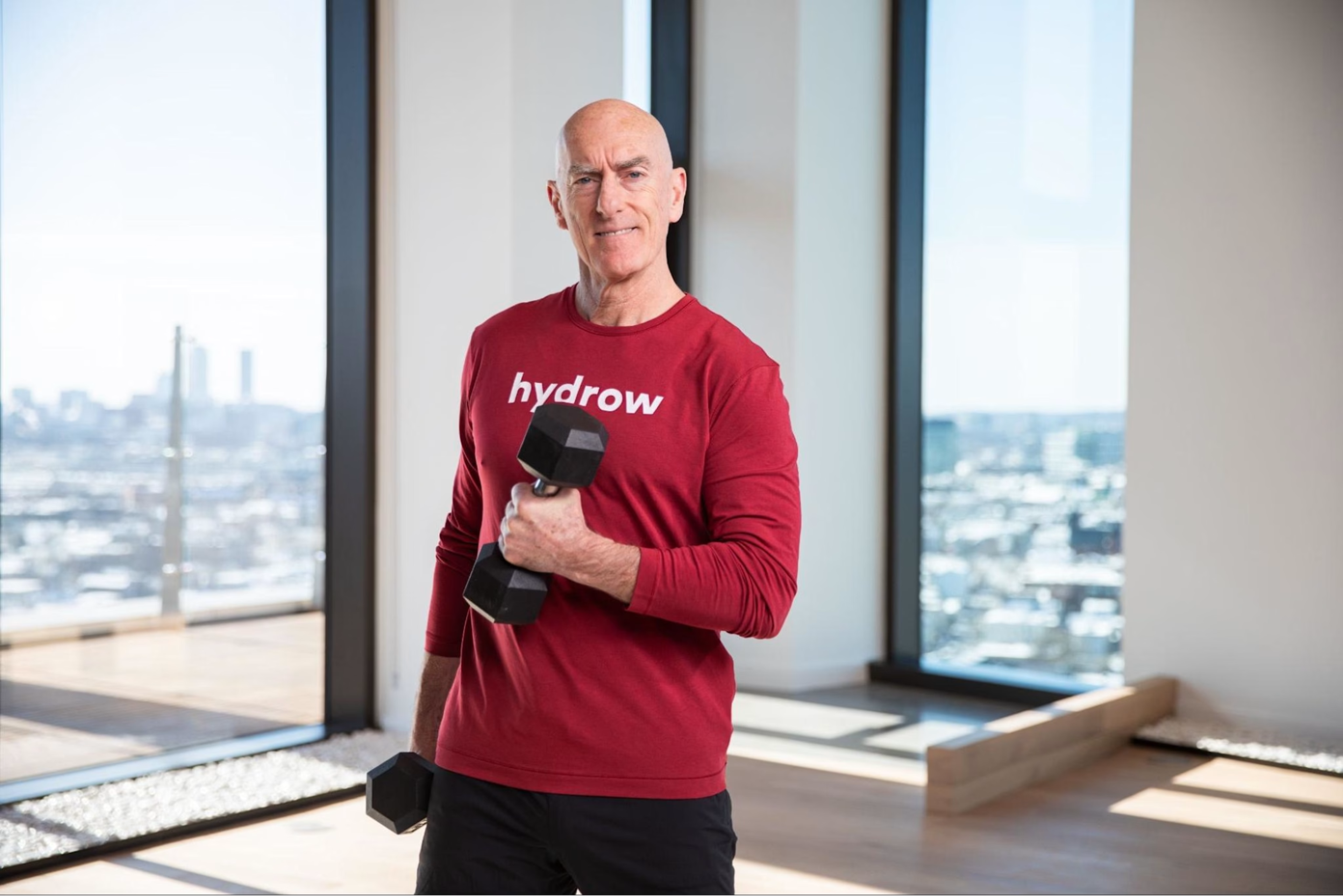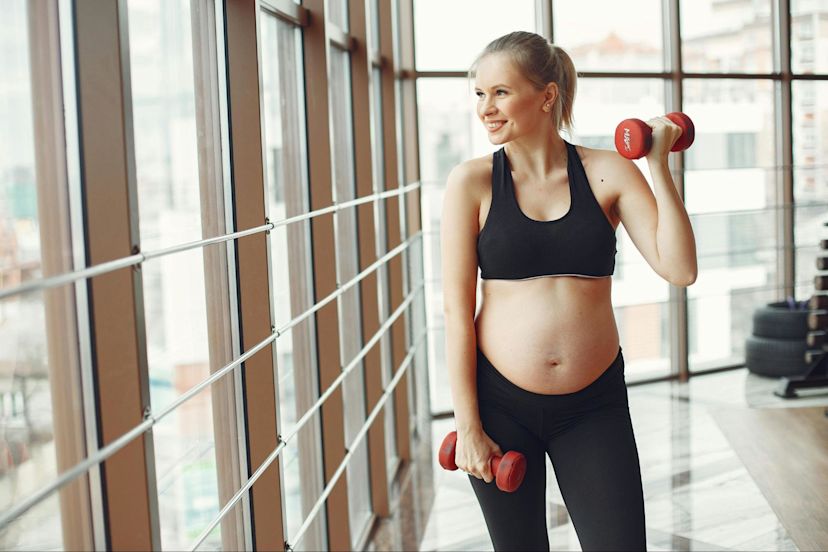The 15 Best Strength Training Exercises for Marathon Runners
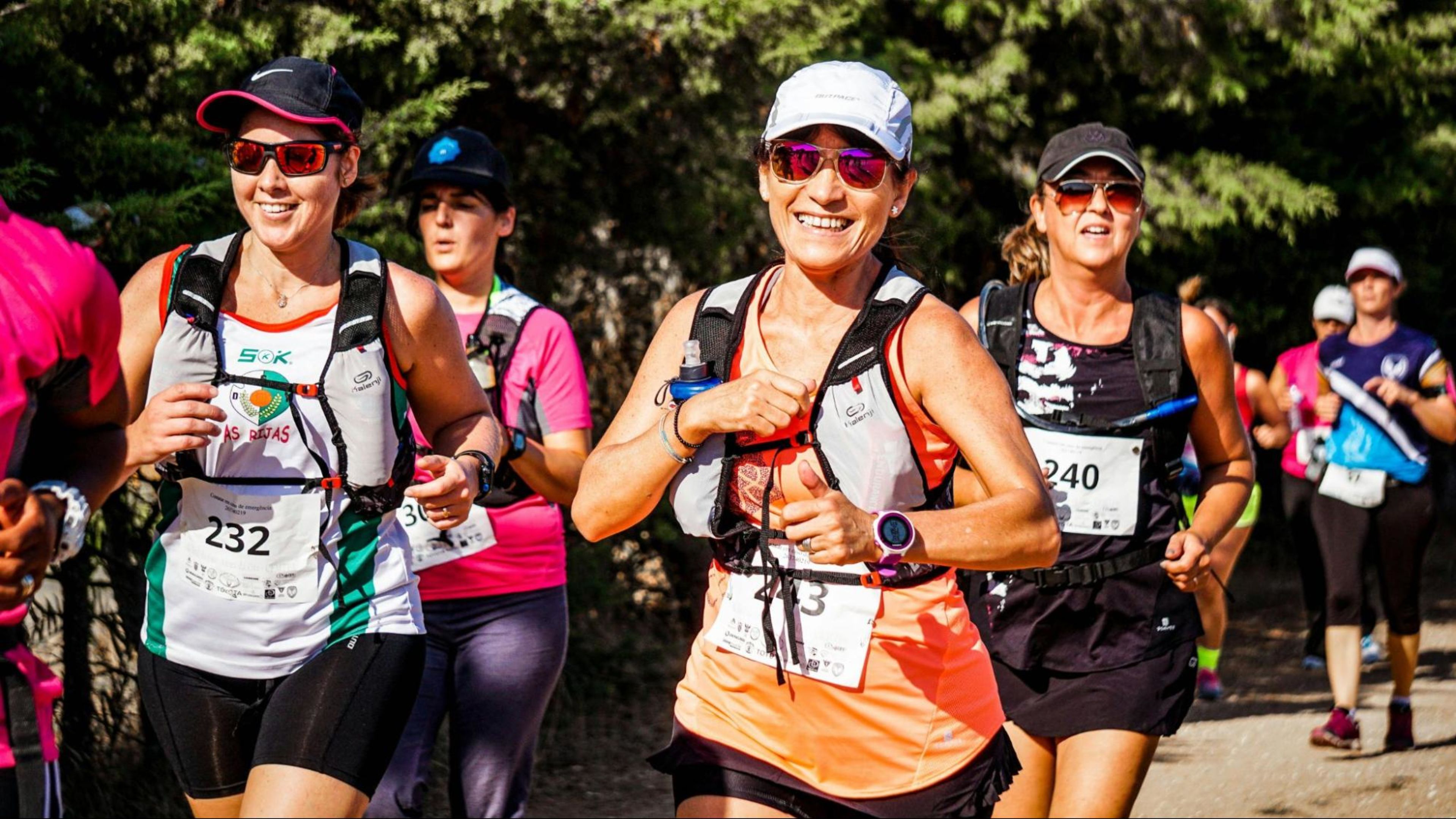
Marathon training is intense and requires more than just running. Strength training is an essential component that helps prevent injuries, enhances endurance, and boosts overall performance.
In this blog, we'll dive into the benefits of strength training for marathon runners, provide you with the top 15 strength training exercises that are tailored for marathon training, and offer tips on how to incorporate strength work into your routine.
Key takeaways:
Strength training is essential for marathon runners because it prevents injuries, improves endurance, and supports proper running mechanics.
Incorporating full-body, lower-body, upper-body, and core exercises—like squats, deadlifts, push-ups, and planks—builds the strength and stability needed for more efficient, powerful running.
For best results, include two weekly strength sessions in your marathon training plan, taper intensity before race day, and balance strength work with mobility and recovery to avoid overtraining.
Let's dive in!
The benefits of strength training for marathon runners
Many runners focus solely on running when training for a marathon, but strength training offers myriad benefits that can enhance your performance and longevity. Here’s why strength training is important if you’re training to run a marathon:
1. Injury prevention
Marathon running involves a lot of higher-impact, repetitive motion, which can put significant strain on your muscles and joints. Your knees in particular are particularly vulnerable during marathon training. Strengthening muscles in the legs, core, and upper body helps prevent injuries by stabilizing your joints and improving your posture.
2. Improved endurance
Building strength in the legs, glutes, quads, and calves helps runners withstand the impact of long-distance running. Stronger muscles endure longer without fatigue, which is crucial for completing a marathon.
3. Better running form
You may think that upper-body strength is only a nice-to-have for long-distance running, but in fact, stronger upper-body muscles (particularly in your core and shoulders) help contribute to better running posture and running mechanics. This is essential because improper form can lead to inefficiency and muscle strain during long runs (just think of the thousands of times you swing your arms and shoulders as you run!).
4. Enhanced power for hill runs
Strength training can significantly help when running on a course with elevation. Building leg power and explosiveness is vital for maintaining speed and stamina while tackling inclines.The stronger your legs are, the more efficient your running becomes.
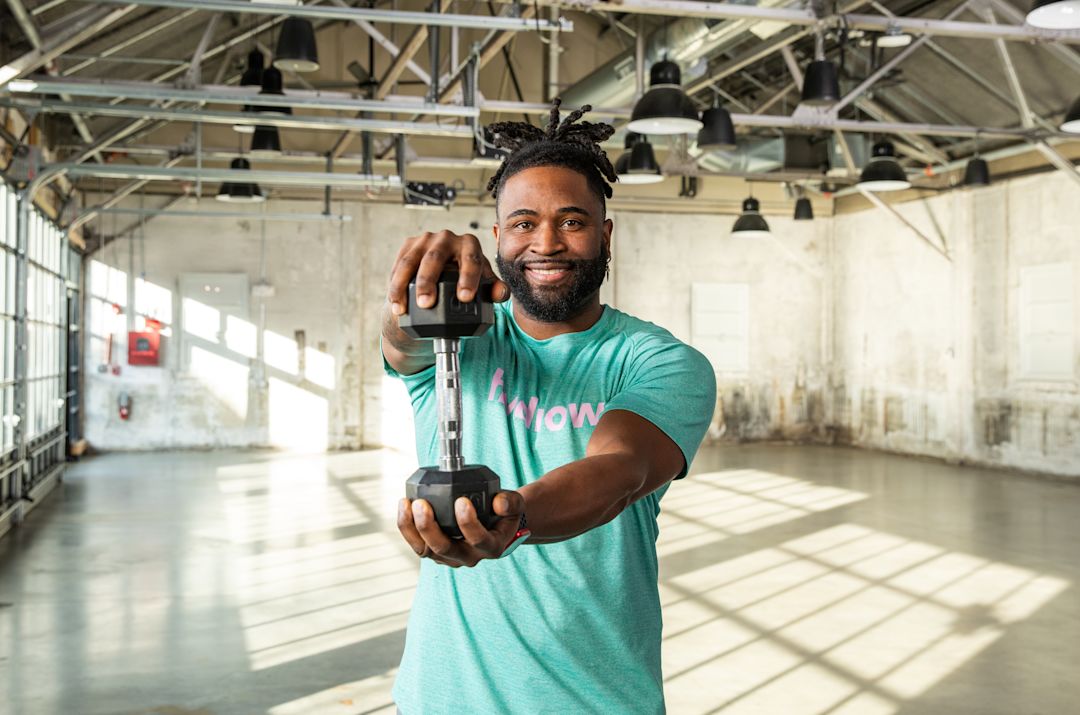
Explore Hydrow's library of strength training workouts.
The 15 best strength training exercises for marathon runners
Looking for a place to start? Here are the 15 most effective strength training exercises tailored for marathon runners:
The best full-body strength training exercises for marathon runners
When it comes to running stronger, longer, and with less risk of injury, full-body strength training is a game-changer. These exercises don’t just target one muscle group—they work your entire body, building the power, stability, and endurance you need to support every stride.
Here are some of the best full-body moves for marathon runners looking to level up:
1. Back squats
Back squats are great for runners because they build strength where it counts. This exercise works your glutes, hamstrings, quads, upper back, shoulders, and hip flexors—all key muscles for powerful, efficient running.
How to do back squats:
Step under your bar and rest it across your upper back.
Grip it tight, stand tall, and step back.
Set your feet shoulder-width apart, toes slightly out.
Brace your core, keep your chest up, and lower into a squat.
Go down to parallel, then drive through your heels to stand back up.
Repeat.
2. Deadlifts
Deadlifts strengthen your posterior chain—glutes, hamstrings, and back—helping you generate more power with every stride. They also build core stability and grip strength, which supports better posture and control on long runs or hills.
How to do deadlifts:
Stand with feet hip-width apart, barbell in front of you, similar to the squat setup.
Hinge at your hips and bend your knees to grip the bar.
Keep your back flat as you lift the bar by driving through your heels.
Stand tall, then lower the bar back down with control, with your legs.
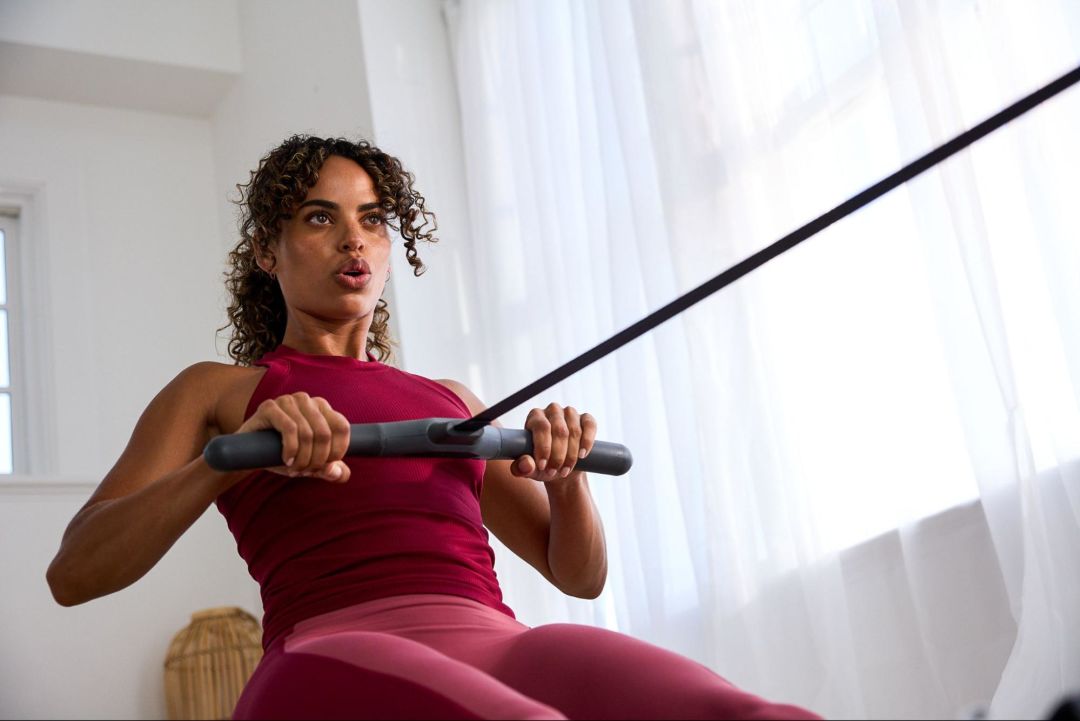
Efficiency for the win.
Work 86% of your muscles in just 20 minutes of rowing with Hydrow.
3. Bulgarian split squat
This move builds single-leg strength and balance, both crucial for runners who are basically doing a series of one-leg hops. It helps even out muscle imbalances, improves hip stability, and supports injury prevention—especially for knees and ankles.
How to do a Bulgarian split squat:
Stand in front of a bench with a dumbbell in each hand.
Extend your left leg back and place the foot on the bench.
Bend your right knee to lower your body, just like the squat, until the rear knee almost touches the floor.
Return to the starting position and repeat.
4. Kettlebell swings
Kettlebell swings train explosive hip drive and cardiovascular endurance. They target the glutes, hamstrings, and core, teaching you to generate quick, efficient power.
How to do kettlebell swings:
Stand tall with feet shoulder-width apart and the kettlebell in both hands hanging in front of you.
Hinge your hips, and with an organized posture and slightly bent knees, gently swing the kettlebell between your legs.
Contract your glutes and push your hips forward to stand straight while letting the kettlebell swing forward as far as it will go naturally.
The best lower-body strength training exercises for marathon runners
Your legs do the heavy lifting on race day, so building strength in your glutes, quads, hamstrings, and calves is key. These lower-body exercises help you run more efficiently, power up hills, and stay injury-free through high mileage.
1. Step-ups
Step-ups are excellent for building stability and strength in your hips, quads, and glutes. This exercise helps develop the single-leg power needed for running, enhancing your balance and stability with every stride while reducing the risk of injury, particularly in the knees and hips.
How to do step-ups:
Stand in front of a step or bench.
Place your foot flat on the step and push through your heel to lift your body up.
Bring your back leg up so you're standing tall on the step.
Lower your back leg to the floor with control.
Do all reps on one leg, then switch sides.
2. Standing hip dips
Standing hip dips target hip strength and stability, which are crucial for preventing side-to-side imbalances while running. Strengthening these muscles helps you maintain proper knee alignment and improves your overall running form, making each stride more efficient and reducing injury risk.
How to do standing hip dips:
Stand on a step or low platform with your feet pointing forward. One foot should be near the edge.
Shift your weight to the other foot, hanging off the edge of the box or platform.
Slowly dip the hanging leg toward the floor while maintaining a straight leg on the platform.
Push through the standing leg to return to the start, essentially performing a hip-shrug.
Do all reps on one side, then switch.
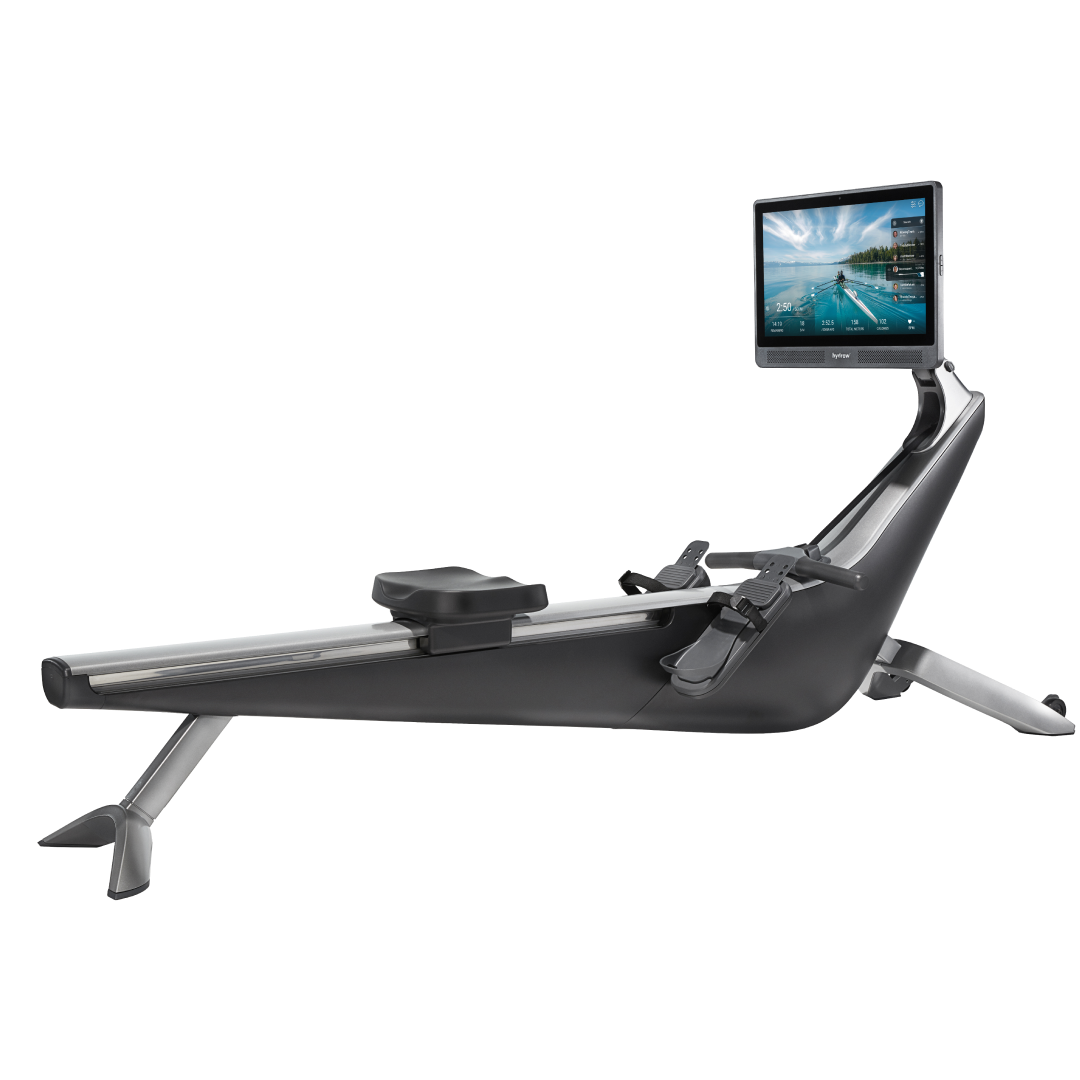
Cardio and strength, combined
Burn calories and build muscle with steady, natural movements.
3. Calf raises
Strong calves are essential for marathon runners, as they play a critical role in propulsion, shock absorption, and ankle stabilization. Calf raises help build calf strength and endurance, improving your running mechanics and reducing the likelihood of injuries like strains or Achilles tendonitis.
How to do calf raises:
If using weights, hold them at your sides.
Stand with feet hip-width apart, with your legs straight and no bend in the knees.
Raise your heels off the ground.
Lower back down with control.
4. Glute bridges
Glute bridges activate the glutes, hamstrings, and core, supporting hip extension and power generation. This exercise strengthens the muscles needed for a strong push-off or propulsion and helps maintain proper posture during long runs, improving running efficiency and reducing fatigue.
How to do glute bridges:
Lie on your back with legs bent at 90 degrees and feet flat on the floor.
Lift your hips and back off the floor, forming a straight line from shoulders to knees.
Hold for five to 10 seconds.
The best upper-body strength training exercises for marathon runners
Strong arms, shoulders, and back muscles help you maintain good posture and form, especially in the final miles of a marathon. These upper-body exercises support better breathing, balance, and overall endurance on the run.
1. Push-ups
Push-ups are great for strengthening the pecs, deltoids, and triceps, while also engaging the core, back, and hips. This full-body movement helps marathon runners develop stabilizing muscles that support posture and balance, especially in the upper body, allowing for a more efficient and controlled arm swing during long runs.
How to do push-ups:
Start in a plank position.
Lower your body until your chest nearly touches the floor.
Push back up while engaging your core.
2. Arnold press
The Arnold press targets the deltoids, traps, triceps, and pecs, making it an excellent exercise for developing shoulder strength and mobility. The wrist rotation involved in this move also improves shoulder flexibility, and progressing to one-arm Arnold presses helps enhance shoulder stability, which is crucial for maintaining form during long-distance running.
How to do an Arnold press:
Hold a dumbbell in each hand at shoulder height, palms facing your body, elbows bent in front.
Press the weights overhead while rotating your palms to face forward as you lift.
At the top, your arms should be fully extended with palms facing out.
Lower the dumbbells back down, reversing the motion so your palms face you again.
Keep your core tight and avoid arching your back as you move.
Repeat for reps with slow, controlled motion.

Did you know?
Over 90% of Hydrow members are still active one year later.
3. Bent-over rows
Bent over rows strengthen the lats, rhomboids, delts, traps, and biceps, helping runners build a strong upper back and arms. This exercise improves arm swing efficiency and posture, contributing to better running mechanics and more effective energy transfer from the arms to the legs, which is essential for long runs.
How to do bent-over rows:
Start standing with your feet shoulder-width apart and a dumbbell in each hand by your sides, palms facing each other, with a slight bend in your knees.
Hinge from the hips until you’re in a comfortable position (ideally at 45 degrees or more).
While maintaining a long spine, let your weights hang in front of you.
Squeeze your shoulder blades together to draw the weights toward your chest, keeping your elbows close to your ribs. Pause here briefly.
Slowly and with control, lower the weights back down to the starting position.
Continue for your desired number of reps.
4. Face pulls
Face pulls focus on the rotator cuff muscles, which are key for stabilizing and rotating the shoulder joints. Strengthening these muscles helps prevent shoulder injuries, improves shoulder mobility, and supports better posture and arm movement during running, reducing fatigue over longer distances.
How to do face pulls:
Use a cable machine or resistance band attached to a sturdy anchor.
Pull the handles toward your face while keeping your elbows high.
Slowly return to the starting position and repeat.
The best core strength training exercises for marathon runners
Your core connects every stride and stabilizes your entire body while you run. A strong, stable core helps improve your running economy, supports better posture, and reduces fatigue, especially over long distances. These exercises target the muscles that keep you solid from start to finish.
1. Pass DB/KB around body (KB around the world)
The pass dumbbell or kettlebell around the body, also known as "KB Around the World," engages the core, especially the obliques, while also activating the glutes and stability muscles. This dynamic movement enhances core strength and stability, which are crucial for maintaining proper form and balance during long runs.
How to do KB Around the World:
Stand tall with your feet about hip-width apart and a slight bend in your knees.
Hold a dumbbell or kettlebell in front of your body with both hands.
Release one hand and start passing the weight around your waist, hand to hand. Keep your core tight and hips square—try not to twist or sway.
Once you’ve done several reps in one direction, switch and go the other way.
Keep the movement smooth and controlled, like a steady rotation, not a toss.
2. Planks
Planks are excellent for building strength and stability in the core, back, and shoulders. Adding isometric exercises like planks into your routine helps marathon runners develop the endurance needed to maintain good posture and form over the course of a race, reducing the risk of fatigue and injury.
Start in a push-up position with your body in a straight line from shoulders to heels.
Keep your body straight by engaging your core and glutes, lower to your elbows and hold steady for 30-60 seconds.
3. L-overs
L-overs target and stabilize the core, especially the obliques, while also improving lower-back mobility. Strengthening these areas helps marathon runners maintain a stable, efficient running posture, while increasing flexibility and range of motion in the hips, which can help improve stride length and reduce stiffness.
How to do L-overs
Lie flat on your back with your arms out to the sides for support, palms down.
Lift your legs up so they’re straight and your feet are together.
Engage your core and slowly lower your legs to one side, keeping your shoulders on the ground.
Stop just before your legs touch the floor, then bring them back to center.
Lower them to the other side, same way—controlled and steady. Keep your core braced the whole time and move only as far as you can without losing form.
How to incorporate strength training into a marathon training plan
So, where does strength training fit into your marathon training? To balance strength training with marathon training, we recommend incorporating two strength training sessions into your schedule every week.
Heavy lifting day: Focus on compound exercises like squats, deadlifts, and lunges to build strength. By prioritizing full-body exercises, you can maximize the small amount of time in your training plan dedicated to strength, keeping your workouts quick yet effective.
Unilateral training day: Focus on exercises that work one side of the body at a time—such as single-leg Romanian deadlifts and step-ups—to improve balance, address muscle imbalances, and help you better transfer power to and from different sides of your body.
When to stop strength training before a marathon
Two weeks before the marathon, most runners will begin tapering their training, including reducing strength training intensity. Avoid heavy lifting or exercises that cause soreness in the week leading up to the race. Instead, focus on lighter bodyweight exercises to maintain muscle engagement without overloading the body.
We recommend stopping even bodyweight strength exercises one week before your marathon event.
Common mistakes to avoid when combining strength and marathon training
Overtraining: Too much strength training can lead to fatigue, negatively affecting running performance. Balance is key here. As with any type of exercise, be sure to listen to your body and scale back or pause your training if you feel like you’re burning out and at risk for injury.
Focusing only on higher reps: Marathon runners should prioritize strength and power over hypertrophy (muscle growth), which means focusing on lower reps with heavier weights.
Neglecting mobility and flexibility: Building strength without maintaining flexibility can lead to tight muscles that hinder running form. Incorporate mobility exercises to help your muscles and joints stay free of tightness or restriction.
Thinking short-term: Of course, when you're training for a marathon, it's natural to have your eyes on the big race. But to really show up at your best—not just for this one, but for future races too—it’s important to think long-term. Striking the right balance between marathon training and strength work can help you avoid burnout and injury. Don’t push yourself to the point where you risk sidelining your progress. A little foresight now can go a long way in keeping your body strong, resilient, and ready for whatever’s next.
Stronger muscles and stronger miles with Hydrow
Strength training is a game-changer for marathon runners, helping to prevent injury, enhance endurance, and improve performance. Incorporating strength training into your routine will not only make you a stronger runner, but also improve your overall running mechanics.
To take your marathon training to the next level, be sure to check out Hydrow. We offer a variety of strength workouts that can complement your marathon training and boost your performance. And, if you’re looking for a way to cross-train that blends cardio and strength, rowing is a fantastic complement to running. It builds upper- and lower-body strength, reinforces posture, and promotes endurance—all without the impact of land-based sports.
So, don't wait—start incorporating strength training into your marathon plan today with Hydrow!
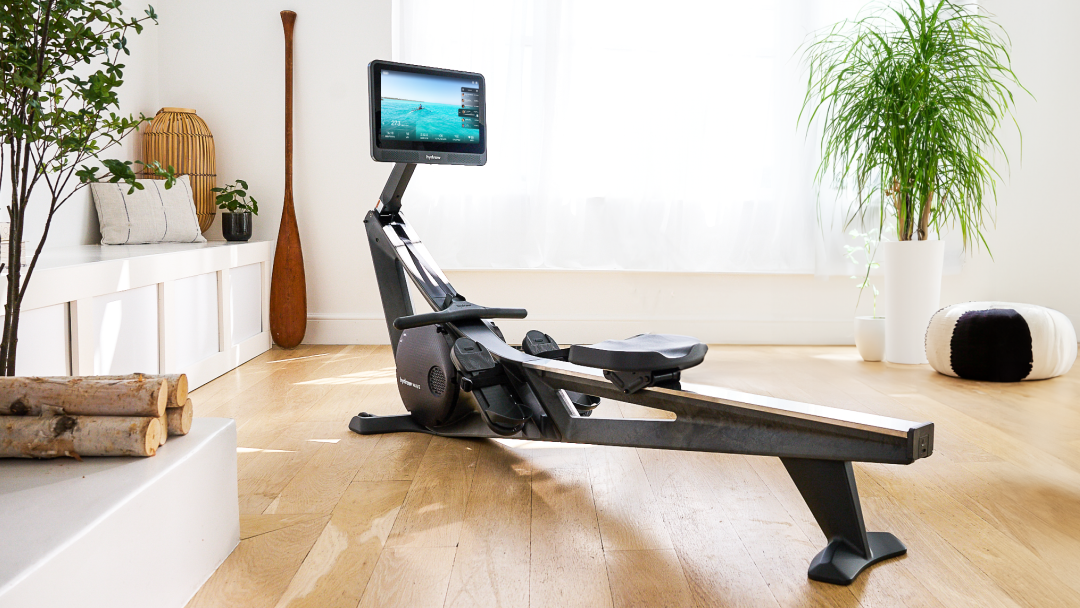
Real strength keeps moving
Learn how working out with Hydrow can help support a fuller, more active life.

